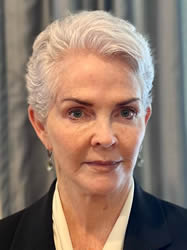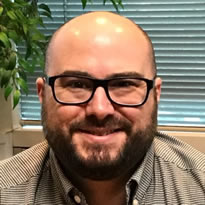Introduction
ABSTRACT
Creative professionals in team-based work settings value work communications skills among their colleagues. As public schools create professional learning communities and experiment with teacher-led curriculum and program development, traditional interview processes may prove inadequate for these new collaborative environments. New and creative selection models may be needed to enable teacher or other professional teams to choose candidates with the 21st century skills needed for success. In public sector environments, work rules are often highly developed and professionals are entitled to interview. Qualifications, training, experience and seniority as determinants often get reduced to transfer rights using seniority as the main or only criteria. This trend detracts from creating a competitive environment in which to attract & retain a high-quality teaching staff. Solutions can be found within existing contract parameters, however, if the attributes necessary to teach 21st Century skills are actually required to be demonstrated, not just described, in the interview process.
INTRODUCTION
How does an innovative work team hire the right person for an opening? The new Hughes STEM High School in Cincinnati had to fill over a dozen new teacher positions to prepare for their opening in the fall of 2009. Teachers on the selection committee planned thoughtfully to choose the right questions, yet they knew what all interviewers understand by instinct: First, anyone can say anything in an interview. Secondly, the skills of responding to interview questions, however creative they might be, can sometimes be quite different than those needed to do the job well. The team task interviews were the result of a problem-solving process designed to produce a faculty for the new school whose communications skills were consistent with STEM and 21st Century learning models.
The STEM high school project was an outgrowth of a powerful local university-business-school district partnership and the Ohio STEM Learning Network, with support of Ohio Governor Ted Strickland and his administration. By design, it was to be innovative, aimed at developing and modeling 21st century learning skills. The vision of the planning team and principal? A non-selective public high school that offered an academically elite learning environment while developing a collaborative, supportive culture.
The district, Cincinnati Public Schools, and the AFT-affiliated teacher union (CFT) had a history of collaborative projects, including peer review and mutual support for strong teacher-leadership development. The lead teacher model enabled talented classroom teachers to choose paths other than administration to offer effective school leadership.
In August, four lead teachers were selected to plan the new school. As the fall progressed, curriculum and instructional design dialogues led to a choice to use project-based learning, with an interdisciplinary focus. Team planning and co-teaching was a must in this design.
The planning team's duties also involved hiring the principal as part of a selection committee including parents and community representatives. Those principal interviews were focused on finding an administrator with a collaborative viewpoint and practice and who was open to teacher leadership and shared governance.
The group then served as the teacher selection panel during the spring of 2009, along with the new principal, who was assigned to join the group in June due to her previous assignment. This unanticipated development meant that the teacher planning group continued under its own internal, and by now, very collectivized leadership.
The planning group was passionate about their mission, and about identifying teacher-colleagues that would understand and embrace the new collegial, collaborative model.
TEACHER RECRUITMENT
In teacher recruitment sessions in March of 2009, the planning team described this approach, and made it clear that teaching in the STEM school would be very challenging. In a deliberate effort to break out of traditional teacher isolation, candidates were warned that this was not a school in which a teacher could choose to shut the classroom door and "do their own thing," their own way. Classrooms would be a "fishbowl" environment, with university professors, grad students, and undergrads strolling through the classrooms, observing through glass and electronically, via STEM-cams and distance learning through the HUB Fusion Center, another important element of the OSLN design and the STEM partnership. In a model more familiar to medical professionals than teachers, a clinical setting was envisioned, with analysis and dialogue occurring across pre-service, novice, and veteran teachers.
Other warnings were shared with prospective applicants: Teachers would all be on a challenging learning curve, as the program involved technology integration directly into every course, and the physical facility would be highly uncomfortable the first year, as the school would be crammed into "swing space" while a district-led renovation project completed their permanent space. Every teacher would also be expected to participate in the SEL (social-emotional learning) component of the program through an advisory group.
Over 65 prospective teachers attended the teacher recruitment session in March of 2009, including many district colleagues from other high schools, from six other local districts, and some pre-service prospects. Laying out this collaborative vision to their colleagues was energizing to the group, but the real test was designing an interview process that would enable teachers with a high level of teamwork-related skills to have their assets revealed and recognized.
Discussions of interview questions were intense, and the conversation turned to a challenge: could the group find a way to have the candidates actually demonstrate their teamwork skills instead of just talking about them? Jamie Beirne, in the role of rotating chairman of the group, produced a document designed to capture responses to a host of carefully crafted questions. Key issues explored included understanding of STEM/21st Century learning skills, technology, commitment, comfort level with the clinical environment, interdisciplinary planning skills, disciplinary knowledge, project-based learning modes, teamwork, and strategies for working with students with special needs.
. . .Continue to read rest of article (PDF).











